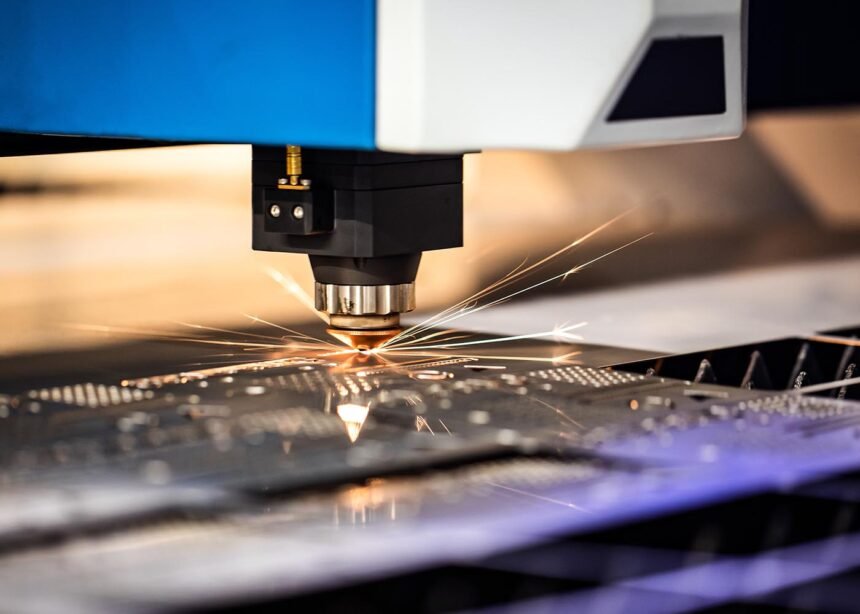When designing metal parts for manufacture, technical proficiency, material knowledge, and creative thinking are all required. The aim is to design parts that can be efficiently produced while meeting quality standards, structural integrity, and functionality requirements. Because it makes it possible to precisely produce complex shapes, sheet metal bending is an essential process in the manufacturing of metal parts. Creating metal parts that are well-suited to bending processes can significantly improve manufacturing efficiency and reduce expenses.
This post looks at crucial guidelines that designers should follow while creating metal components, emphasizing the accurate shaping that may be accomplished by using sheet metal bending.
1. Picking Material for Bending
One of the first tasks in developing metal parts is selecting the appropriate material. The strength, flexibility, and hardness of certain metals can vary, and this can have an impact on how they behave when bent. For instance, metals like aluminum and copper are more pliable, making them simpler to bend, whereas stainless steel and titanium are more resistive, needing more force during the bending process.
The bendability of the material must be taken into account when designing parts for sheet metal bending. While harder metals might need extra procedures like annealing (heating the metal to lessen hardness), materials with lower tensile strength are easier to shape without breaking or deforming. The thickness of the material also affects bending; thinner sheets can withstand tighter bends, whereas thicker sheets may require bigger bend radii to avoid fractures.
2. Minimize Bend Radius for Durability
The bend radius is the inner curvature of the bent metal. Maintaining control over the bend radius during sheet metal bending is crucial to the part’s strength and longevity. An excessively narrow bend radius may concentrate force at the bend, which could result in fractures or shattering.
As a general guideline, the minimum bend radius needs to be at least as thick as the sheet metal that is being used. When dealing with a metal sheet that is 1 mm thick, for instance, the bend radius must not be less than 1 mm. By doing this, material fatigue is avoided and tension is distributed uniformly throughout the bend.
While it may be alluring to design with acute bends for aesthetic purposes, it is preferable to use a greater radius to prevent the part’s structural integrity from being compromised. Further optimizing the production design is possible by ensuring that the bend radius is in line with the capabilities of the manufacturer’s equipment during the design process.
3. Account for Springback
Springback, which happens when the metal tries to revert to its previous shape after bending, is one of the frequent problems with sheet metal bending. Parts that deviate somewhat from the desired shape or angle may arise from this. The kind and thickness of the material have an impact on springback; tougher materials show higher springback.
Designers can include over-bending in the design to counteract springback. For the metal to bounce back into the proper shape, it must be bent just a little bit more than the appropriate angle. To fine-tune the final shape, some materials may also need secondary procedures. To guarantee that the design takes this behavior into account, close collaboration with the manufacturer is essential.
4. Optimize Bend Orientation
The direction of the bends about the metal’s grain direction can greatly affect the result when constructing metal pieces. Bending sheet metal perpendicular to the grain can cause cracking, especially in harder metals when the grain structure is developed during rolling.
Bends should be designed parallel to the grain direction to prevent these problems. Stronger, smoother bends are the outcome of this. To reduce the chance of cracking, think about adopting a more flexible material or enlarging the bend radius if the design calls for bends that are perpendicular to the grain.
5. Avoid Complex Designs Where Possible
Although sheet metal bending makes it possible to create elaborate shapes, too detailed designs may make the manufacturing process more difficult. The need for more tooling and setup time increases with design complexity, which can raise manufacturing costs and lead to longer lead times.
Designs that have a lot of sharp corners, tight bends, or complicated cuts, for instance, could need special tools or more machining work. Simplifying the design whenever possible will help it be optimized for sheet metal bending. Simplifying the design will save manufacturing costs while enhancing consistency and lowering the possibility of mistakes occurring during the manufacturing process.
6. Incorporate Bend Reliefs for Better Accuracy
Small notches or cutouts called bend reliefs are placed close to bends to stop the metal from ripping or warping while being bent. Bend reliefs allow cleaner, more precise bends when designing parts with repeated bends, especially in locations where the material would bunch up or distort otherwise.
When creating U- or L-shaped pieces with tight bends near edges, bend reliefs come in handy. You may let the metal flex smoothly without putting undue stress on it by creating a relief region. The relief is a straightforward yet useful addition that can significantly improve the quality of the finished product. Its size and shape can vary based on the part’s design and the material being utilized.
7. Use Consistent Hole Spacing
It’s important to think about where holes should be placed in bends if the design calls for holes in the metal component. When sheet metal is bent, holes that are too near to the bend line may distort, resulting in errors or even tears.
Make sure the holes are positioned far enough away from the bend line to prevent this. As a general rule, holes should be spaced from bends by at least 1.5 times the thickness of the material. By keeping the holes from elongating or misaligning during bending, this spacing aids in maintaining the holes’ structural integrity. In certain situations, tooling features like pilot holes or slots can also be used by designers to help align the holes after bending.
8. Collaborate with the Manufacturer
When designing, designers and manufacturers should constantly collaborate closely, particularly when sheet metal bending is involved. Sheet metal manufacturers can offer insightful advice on how to improve the production design since they have a thorough understanding of the capabilities and constraints of their equipment.
Early collaboration helps designers steer clear of frequent hazards like too-tight bending radii, brittle materials, or designs that call for expensive specialized tooling. Insight on the most economical methods of producing the part, such as maximizing material utilization, reducing waste, or accelerating production, can also be obtained from manufacturers.
Conclusion
Achieving a balance between creativity and pragmatism is crucial when designing metal parts for manufacturing. To guarantee that parts can be produced precisely and effectively, it is essential to comprehend the sheet metal bending process and its limitations. You may produce metal parts that satisfy criteria for both functionality and aesthetics by choosing the appropriate materials, considering springback, optimizing bend orientation, and streamlining designs.
Additionally, common problems during the bending process can be avoided by including design factors such as bend reliefs and keeping adequate hole spacing. Most significantly, working with manufacturers at every stage of the design process guarantees that your concept is workable and affordable, which promotes efficient and timely manufacturing.







